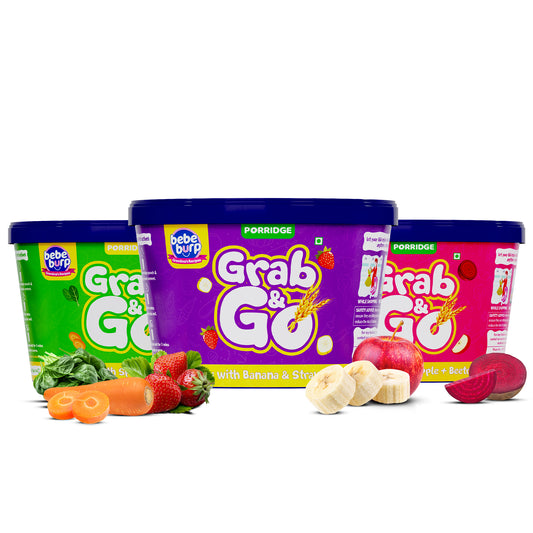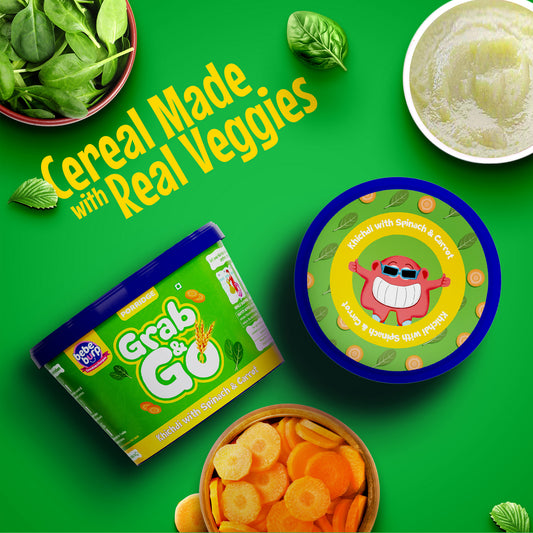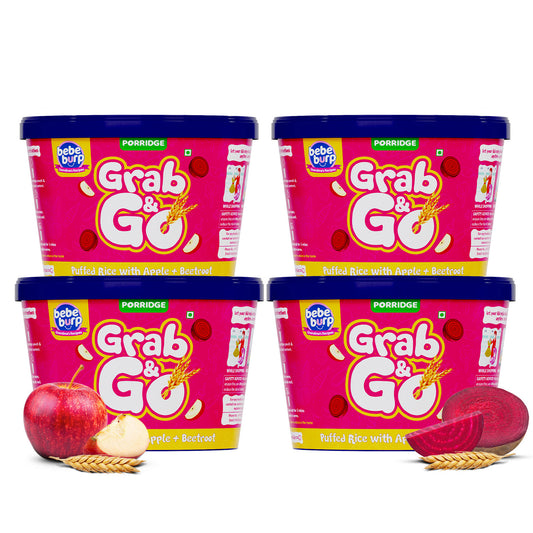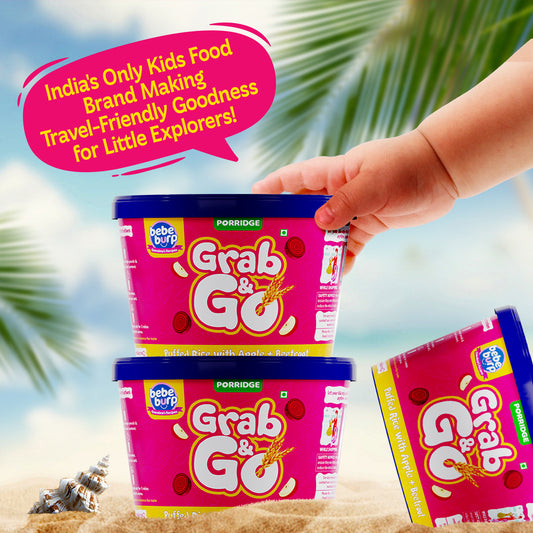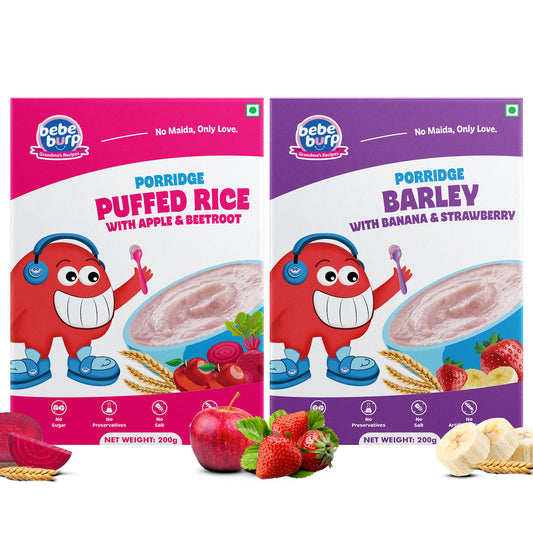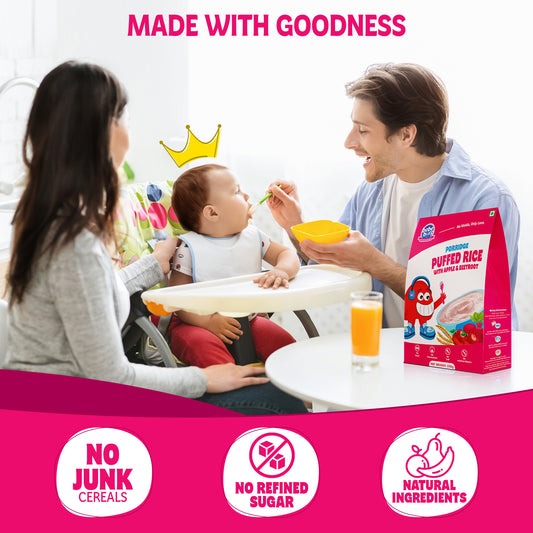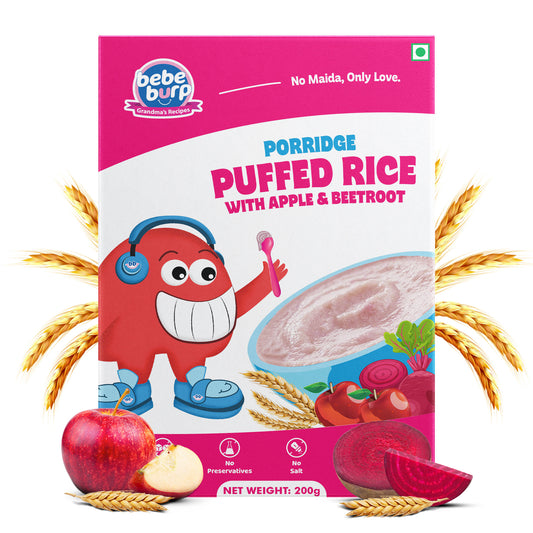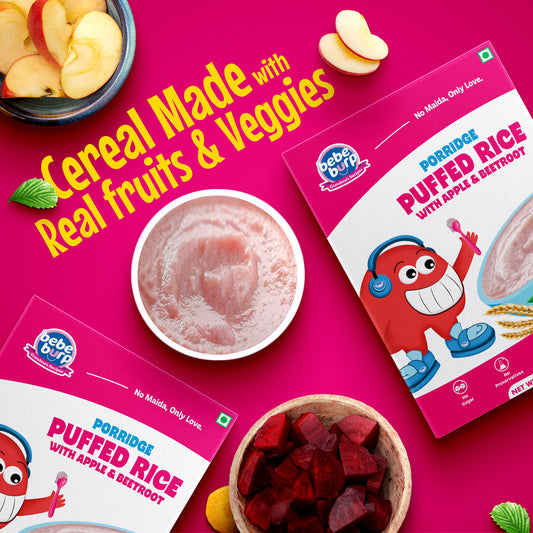Selecting the first food for your baby requires careful consideration. The nutritional benefits of ragi vs rice play a crucial role in this decision.
Ragi is a superior option when choosing an introductory food due to its wealth of nutrients. Ragi's nutritious characteristics include calcium, iron, fiber, and protein, which help your baby grow properly.
Ragi functions better as a first food than rice because it offers higher nutritional value and prevents constipation in a baby's digestive system.
Your baby will gain energy through natural sources and benefit from strong bones because ragi contains calcium.
The introduction of the two grains for babies varies based on tolerance, but ragi maintains its position as a superior whole-grain choice for nutrition.
Nutritional Battle: Ragi vs Rice Nutrition Facts

The composition of ragi vs rice nutritional content varies substantially, while their benefits for human consumption remain distinct.
Rice and ragi supply fundamental energy and carbohydrates yet differ substantially in the amounts of protein and fibre, and dietary micronutrients.
Comprehensive comparison of nutrients
- Ragi (Finger Millet): Ragi stands out due to its numerous nutritional benefits. Its nutritional profile includes antioxidants, calcium, iron, and dietary fibre.
- Each 100-gram portion of cooked ragi provides 1.3 grams of protein, 3.6 grams of fibre, and 350 milligrams of calcium. The food contains a lower glycemic index value, providing an extended energy supply.
- Rice: White rice is one of the fundamental foods people worldwide consume regularly. Carbohydrates give ragi its energy content, yet the nutritional value stands lower than other foods because it does not contain sufficient protein, fibre, or minerals.
- The protein content of 100-gram cooked rice reaches 2.7 grams; however, this food contains low levels of essential vitamins and minerals compared to ragi.
Key vitamins and minerals in both grains
- Ragi: Ragi offers an extensive B vitamin supply, especially niacin and riboflavin, in addition to its high calcium and iron content. Ragi includes minor quantities of potassium, magnesium, and zinc.
- Rice: Rice acts as a carbohydrate source but does not deliver the same number of vitamins along minerals that ragi offers. Ragi contains tiny components of B vitamins, although it provides less calcium and iron than the nutrients found in ragi.
Protein content comparison
Protein is a fundamental aspect for babies to develop and grow properly. Ragi provides more protein than rice in terms of content.
Research indicates that ragi contains higher protein quantities than rice when compared to 100 grams.
One hundred grams of ragi contains 1.3 grams of protein, whereas an equal portion of rice contains 2.7 grams.
The protein quality standards in ragi outperform other foods because essential amino acids are present.
Understanding Carbohydrates in Ragi and Rice
Carbohydrates deliver the primary power supply for your baby's growth. The carbohydrate content in both ragi and rice is high, although their digestion patterns differ fundamentally alongside their nutritional characteristics.
- Carbohydrates in Ragi: Hearing good news about ragi is its high content of complex carbs and slow energy release through its low glycemic index. Ragi represents an optimal food because it supplies continuous energy to developing babies.
- Carbohydrates in Rice: White rice represents a source of simple carbohydrates in its rice variety. The digestion of simple carbohydrates creates rapid blood sugar level increases. Energy from rice comes rapidly but does not compare to the enduring advantages provided by ragi.
Calorie Count: Ragi vs Rice Calories Compared
The quantity of calories found in ragi against rice is a significant factor in deciding between these two options. The required nutritional value for baby growth can be achieved by consuming both grains. Both ragi and rice have somewhat different calorie values.
- Ragi Calories: Cooked ragi contains 150-170 calories in every 100-gram portion. The higher proportion of fibre in ragi produces a stronger feeling of fullness that would benefit babies moving from liquid to solid diet choices.
- Rice Calories: When prepared, rice equals 130-140 calories in a single serving. Rice contains similar calorie content to ragi but slightly less than 150-170. The deficiency of nutrients and fibre in rice leads to less satiety consumption than in ragi.
Rice vs Ragi Nutritional Value for Different Age Groups

The nutritional requirements of your baby evolve with their age progression. A comparison between ragi vs rice nutritional properties reveals its effect on your baby's developmental phases.
6-8 Months
Infants starting to wean form the first group of their developmental stage. The main objective involves adding nutritious, iron-containing, digestible foods to the baby's diet.
Ragi stands out from rice as the better initial food choice because of its elevated iron content. Ragi contains higher amounts of calcium for proper bone development and increases calcium density.
8-10 Months
Regular summation of solid food choices for babies should include nutrient-rich choices. The digestive health of infants improves because ragi contains high amounts of dietary fibre.
Ragi's calcium, along with its iron, helps support bone growth in your baby as well as the development of red blood cells. Children can start eating rice at this time, yet ragi must remain essential for their meals for continued growth.
10-12 Months
Your child should now consume various foods at their current stage. The choice between ragi and rice emerges as a personal liking that adds diversity to their meals.
Ragi surpasses rice in nutrient content, especially vitamins min, minerals, and protein, but it is still an acceptable food option for diet diversity.
Above 12 Months
Your baby becomes ready after one year to consume ragi or rice as equal food options for their diet.
Provide ragi regularly to your child because it offers high amounts of calcium, iron, and fibre despite its nutritional advantages.
The introduction of rice should be limited since ragi delivers superior dietary benefits to the human body.
Special Considerations When Choosing Between Ragi and Rice

Selecting ragi or rice depends on specific factors you should consider regarding these healthful alternatives.
- Digestibility: Due to its gluten-free nature, ragi is an excellent aliment for babies with gluten issues in their system. Rice comes without gluten, yet it does not contain the nutritional features of ragi.
- Iron Deficiency: Ragi becomes the best option to manage iron deficiency risk in babies because it provides higher iron levels than other choices. The development of red blood cells depends heavily on iron consumption, which also helps prevent anemia formation.
- Texture Preferences: Ragi might not appeal to all babies thanks to its distinct graininess although rice presents a convenient smooth meal option. Feed your infant ragi and rice to determine which food they prefer best by trying them both.
- Allergies: Configuration of individual food introduction remains crucial for monitoring allergies in infants so parents can easily monitor for possible allergic reactions. New foods require extra caution for rice and ragi since they are typically safe.
Ragi vs Wheat vs Rice: A Three-Way Comparison

A brief examination of wheat and rice follows the discussion of ragi. The three grains in baby food products provide separate nutritional benefits yet share common uses in this diet.
Ragi: We already covered that ragi provides an abundant supply of calcium alongside iron and fibre and contains protein in its composition. The grain is best for infants who want to develop healthy bones while growing steadily.
Wheat: Wheat contains protein together with several carbohydrate components. The nutritional value of grain is lower than that of ragi, while wheat has gluten, which represents a potential problem for infants with gluten allergies.
Rice: Eating rice gives babies fast energy but the vitamins and essential minerals in ragi are missing in this grain. People choose rice as their first food selection when introducing solid foods because it produces straightforward digestion for babies.
Conclusion
Ragi is superior to rice in nourishing babies because it contains more vital minerals, vitamins, and fibres. Ragi should be your primary choice when selecting foods for your baby because it provides essential health benefits for growth development and overall wellness.
The selection of ragi and rice as baby food depends on their nutritional requirements and health needs. When selecting your baby's initial foods, you must assess the dietary benefits, carbohydrate levels, and multiple criteria to find the optimal choices.


